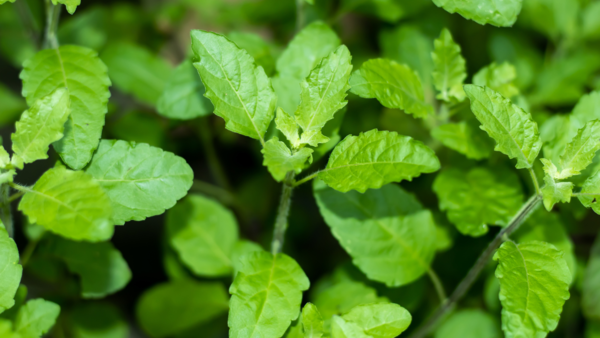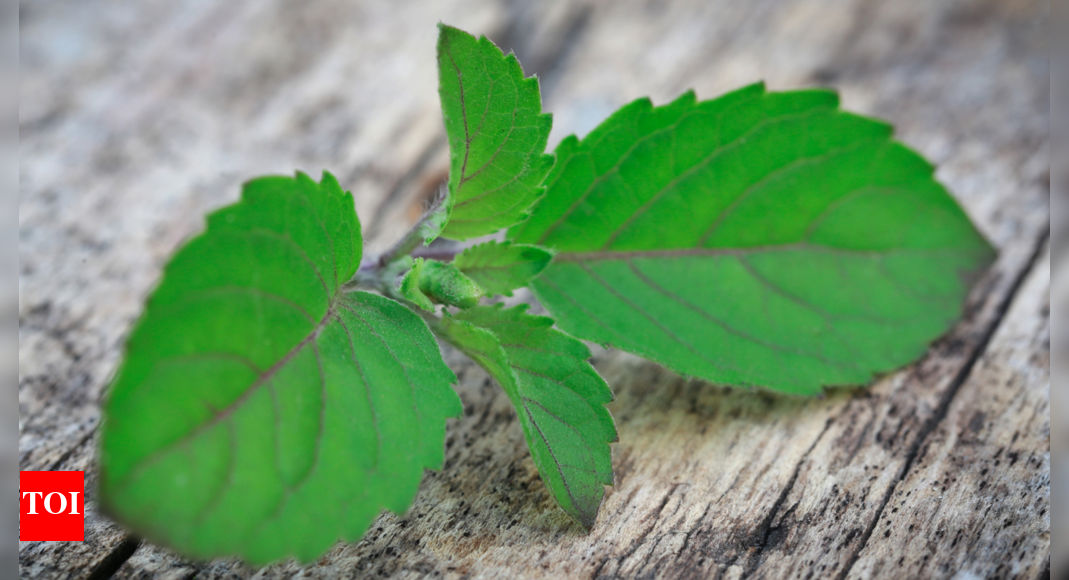There’s a quiet charm in the simplicity of ancient traditions. In many homes, the Tulsi plant sits in a clay pot near the entrance, not just for its spiritual presence, but for the belief that it brings calm and strength. One claim that’s been circulating quite a bit lately is that eating three Tulsi leaves can lower cortisol levels in just 40 minutes.It sounds almost magical, but is it really true? Here’s all you need to know about the topic.
What is cortisol and why does it matter?
Cortisol is often called the “stress hormone.” It helps the body respond to challenges, both physical and emotional. But when cortisol stays high for too long, it can lead to irritability, sleep problems, fatigue, and even affect memory and immunity. That’s where herbs like Tulsi come into the picture.Tulsi, also known as Ocimum tenuiflorum or Holy Basil, has long been used in Ayurveda to balance the body’s systems. But what does modern science say about its effects on stress?
The 40-minute claim: What’s the origin?
The buzz around Tulsi lowering cortisol levels in 40 minutes likely comes from interpretations of clinical research, though the actual trial data is a bit more layered.A randomized double-blind placebo-controlled trial (the gold standard in research) studied the effects of Ocimum tenuiflorum extract. Over eight weeks, participants reported reduced stress levels, better sleep, and lower cortisol levels in their hair and saliva, especially after exposure to a stress test.Now, here’s where things get interesting: The Maastricht Acute Stress Test used in the study showed that those taking the Tulsi extract had a buffered stress response, measurable even in the short term. Salivary cortisol levels dropped significantly during this short window. This doesn’t directly prove the 40-minute effect from eating raw leaves, but it does suggest that Tulsi can have a fast-acting influence on stress biology.

Eating 3 Tulsi leaves
While the study used a standardised extract, chewing three fresh Tulsi leaves every morning could offer similar benefits over time, especially as part of a regular routine. Tulsi contains adaptogens, natural substances that help the body adapt to stress. These compounds are absorbed quickly through the mucous membranes in the mouth and stomach.The comforting ritual of gently picking three fresh leaves in the morning and chewing them slowly can bring a moment of pause. It’s not just about the plant’s chemistry, it’s the calming act itself that contributes to well-being. When combined with deep breathing or quiet time, this habit may gently shift the body into a more relaxed state, perhaps even within that 40-minute window.
Not just an herb, but a companion to the nervous system
Tulsi’s effect goes beyond cortisol. In the study, participants also showed:
- Lower salivary amylase, a marker of acute stress.
- Reduced blood pressure, both systolic and diastolic.
- Improved subjective mood and sleep quality.
This indicates that Tulsi works on multiple levels, calming the nervous system, improving mental clarity, and supporting restful sleep. And the best part? It was well-tolerated with no major side effects.The leaf might be small, but its reach is vast.
What can be believed?
While chewing three Tulsi leaves might not be a “cure-all” or a quick-fix miracle, there is some truth to the idea that it can begin calming the body fairly quickly. The 40-minute claim is not entirely baseless—it’s supported by early biological shifts seen in clinical trials, though more research is needed on fresh leaves vs. extracts.Still, what’s clear is this: consistent use of Tulsi—whether through supplements, fresh leaves, or teas—can support a measurable reduction in stress levels over time.
var _mfq = window._mfq || [];
_mfq.push([“setVariable”, “toi_titan”, window.location.href]);
!(function(f, b, e, v, n, t, s) {
function loadFBEvents(isFBCampaignActive) {
if (!isFBCampaignActive) {
return;
}
(function(f, b, e, v, n, t, s) {
if (f.fbq) return;
n = f.fbq = function() {
n.callMethod ? n.callMethod(…arguments) : n.queue.push(arguments);
};
if (!f._fbq) f._fbq = n;
n.push = n;
n.loaded = !0;
n.version = ‘2.0’;
n.queue = [];
t = b.createElement(e);
t.async = !0;
t.defer = !0;
t.src = v;
s = b.getElementsByTagName(e)[0];
s.parentNode.insertBefore(t, s);
})(f, b, e, ‘https://connect.facebook.net/en_US/fbevents.js’, n, t, s);
fbq(‘init’, ‘593671331875494’);
fbq(‘track’, ‘PageView’);
};
function loadGtagEvents(isGoogleCampaignActive) {
if (!isGoogleCampaignActive) {
return;
}
var id = document.getElementById(‘toi-plus-google-campaign’);
if (id) {
return;
}
(function(f, b, e, v, n, t, s) {
t = b.createElement(e);
t.async = !0;
t.defer = !0;
t.src = v;
t.id = ‘toi-plus-google-campaign’;
s = b.getElementsByTagName(e)[0];
s.parentNode.insertBefore(t, s);
})(f, b, e, ‘https://www.googletagmanager.com/gtag/js?id=AW-877820074’, n, t, s);
};
function loadSurvicateJs(allowedSurvicateSections = []){
const section = window.location.pathname.split(‘/’)[1]
const isHomePageAllowed = window.location.pathname === ‘/’ && allowedSurvicateSections.includes(‘homepage’)
const ifAllowedOnAllPages = allowedSurvicateSections && allowedSurvicateSections.includes(‘all’);
if(allowedSurvicateSections.includes(section) || isHomePageAllowed || ifAllowedOnAllPages){
(function(w) {
function setAttributes() {
var prime_user_status = window.isPrime ? ‘paid’ : ‘free’ ;
var geoLocation = window?.geoinfo?.CountryCode ? window?.geoinfo?.CountryCode : ‘IN’ ;
w._sva.setVisitorTraits({
toi_user_subscription_status : prime_user_status,
toi_user_geolocation : geoLocation
});
}
if (w._sva && w._sva.setVisitorTraits) {
setAttributes();
} else {
w.addEventListener(“SurvicateReady”, setAttributes);
}
var s = document.createElement(‘script’);
s.src=”https://survey.survicate.com/workspaces/0be6ae9845d14a7c8ff08a7a00bd9b21/web_surveys.js”;
s.async = true;
var e = document.getElementsByTagName(‘script’)[0];
e.parentNode.insertBefore(s, e);
})(window);
}
}
window.TimesApps = window.TimesApps || {};
var TimesApps = window.TimesApps;
TimesApps.toiPlusEvents = function(config) {
var isConfigAvailable = “toiplus_site_settings” in f && “isFBCampaignActive” in f.toiplus_site_settings && “isGoogleCampaignActive” in f.toiplus_site_settings;
var isPrimeUser = window.isPrime;
var isPrimeUserLayout = window.isPrimeUserLayout;
if (isConfigAvailable && !isPrimeUser) {
loadGtagEvents(f.toiplus_site_settings.isGoogleCampaignActive);
loadFBEvents(f.toiplus_site_settings.isFBCampaignActive);
loadSurvicateJs(f.toiplus_site_settings.allowedSurvicateSections);
} else {
var JarvisUrl=”https://jarvis.indiatimes.com/v1/feeds/toi_plus/site_settings/643526e21443833f0c454615?db_env=published”;
window.getFromClient(JarvisUrl, function(config){
if (config) {
const allowedSectionSuricate = (isPrimeUserLayout) ? config?.allowedSurvicatePrimeSections : config?.allowedSurvicateSections
loadGtagEvents(config?.isGoogleCampaignActive);
loadFBEvents(config?.isFBCampaignActive);
loadSurvicateJs(allowedSectionSuricate);
}
})
}
};
})(
window,
document,
‘script’,
);
#Eating #leaves #Tulsi #plant #reduce #cortisol #levels #minutes



